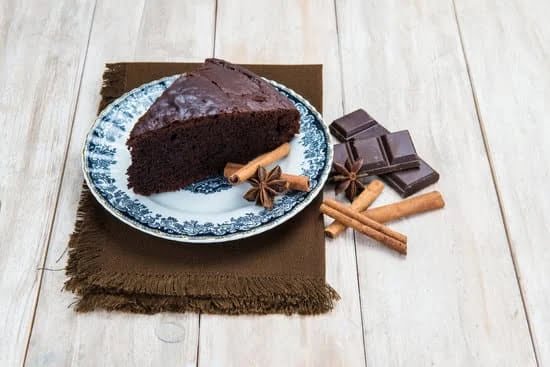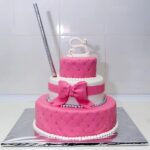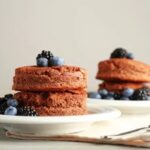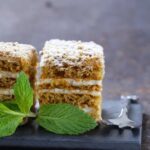When it comes to creating beautiful and professional-looking cakes, a scraper for cake decorating is an essential tool that should not be overlooked. The use of a scraper can make all the difference in achieving smooth buttercream finishes, sharp edges, and stunning textured patterns. In this article, we will delve into the world of cake decorating scrapers, exploring their functions, different types available, and providing tips and techniques on how to use them effectively.
A scraper for cake decorating is a versatile tool that plays a crucial role in achieving flawless cake designs. This simple yet effective tool helps in smoothing out uneven surfaces and creating clean edges on cakes. Whether you are a novice or an experienced baker, using a scraper can greatly enhance your cake decorating skills and take your creations to the next level.
In the following sections of this article, we will provide detailed information on what exactly a scraper for cake decorating is and how it is used in the process. We will discuss the various types of scrapers available in the market, including straight edge scrapers, serrated edge scrapers, and adjustable scrapers and highlight their unique features and benefits.
Furthermore, we will offer guidance on choosing the right scraper based on factors such as desired cake design, level of experience, and personal preferences.
So if you have ever wondered how professional bakers achieve those perfectly smooth finishes or intricate textured patterns on their cakes, look no further than the humble scraper for cake decorating. With its versatility and ability to add depth and dimension to designs, this tool is a must-have for any aspiring baker or even seasoned professionals looking to up their game.
Get ready to explore the world of scrape technique as we dive deep into the art of cake decorating with scrapers.
What is a scraper for cake decorating
A scraper for cake decorating is a versatile tool that plays a crucial role in achieving professional-looking cakes. It is used to smooth and shape the frosting or ganache on the surface of a cake, creating a polished and flawless finish.
The primary function of a scraper is to remove excess frosting from the sides of the cake after it has been coated, resulting in clean, sharp edges. It also helps in achieving smooth textures and even layers of frosting, which are essential for creating intricate designs or applying decorations.
In addition to smoothing and shaping, a scraper can be used creatively to achieve various effects and patterns on cakes. By manipulating the angle and pressure applied during scraping, decorators can create textures like waves or ripples, imitate bark on tree-themed cakes, or even produce ombre or gradient effects by blending different colored frostings.
To use a scraper effectively, it is important to hold it at a slight angle against the cake’s surface while rotating it gently. This ensures consistent pressure across the frosting layer and helps achieve evenness. The flat edge should be parallel to the cake board for straight sides and edges.
Overall, a scraper is an indispensable tool for any cake decorator looking to elevate their creations from amateur level to professional-grade masterpieces. Whether you are aiming for flawlessly smooth finishes or more intricate designs with textured patterns, a good quality scraper will undoubtedly be your best friend in the kitchen.
| Types of Scrapers | Description |
|---|---|
| Straight Edge Scrapers | These scrapers have a straight edge that allows decorators to achieve clean lines and sharp edges on their cakes. |
| Serrated Edge Scrapers | Scrapers with serrated edges are ideal for creating textured patterns, such as waves or tree bark, on the surface of cakes. |
| Adjustable Scrapers | These scrapers offer adjustable angles, allowing decorators to create a variety of textures and effects with ease. |
Types of scrapers for cake decorating
A scraper is an essential tool in cake decorating that helps achieve professional looking cakes. There are various types of scrapers available in the market, each with its unique features and benefits. Understanding the different types of scrapers and their specific uses can greatly enhance your cake decorating skills.
One common type of scraper used in cake decorating is the straight edge scraper. This scraper typically has a flat, straight edge that is perfect for achieving smooth buttercream finishes on the sides and top of cakes. The straight edge helps remove excess frosting or ganache, resulting in clean lines and a polished look.
Another type of scraper is the serrated edge scraper. This scraper features a jagged or toothed edge that creates textured patterns on cakes. It can be used to create rustic or bark-like textures on buttercream cakes, as well as add dimension to fondant-covered cakes. The serrated edge allows for easy manipulation of frosting or ganache, helping you achieve artistic designs with ease.
Adjustable scrapers are another option available for cake decorators. These scrapers allow you to adjust the height or angle, making it easier to achieve sharp edges on your cakes. The adjustable feature ensures that you can customize the scraper according to your desired design, whether it be a tall-tiered cake or a single layer celebration cake.
Each type of scraper has its own advantages and it ultimately comes down to personal preference and the specific design you are aiming to achieve. Consider factors such as material (plastic or metal), size (smaller for precision work or larger for larger cakes), and ergonomic design (comfortable grip) when choosing a scraper that suits your needs.
| Type | Unique Features | Benefits |
|---|---|---|
| Straight edge scraper | Flat, straight edge | Creates smooth buttercream finishes |
| Serrated edge scraper | Jagged or toothed edge | Creates textured patterns and adds dimension |
| Adjustable scraper | Height or angle can be adjusted | Allows for customization and achieving sharp edges |
Experimenting with different types of scrapers can open up new possibilities in cake design. Whether you choose a straight edge scraper for achieving a flawless finish or a serrated edge scraper to add texture and depth, incorporating these tools into your cake decorating process will elevate your creations to the next level.
Choosing the right scraper
Choosing the right scraper is essential for achieving professional-looking cake designs. With a wide range of scrapers available in the market, it can be overwhelming to determine which one is best suited for your needs. However, by considering factors such as the desired cake design, level of experience, and personal preferences, as well as material, size, and ergonomic design, you can select the perfect scraper.
When choosing a scraper for cake decorating, it is crucial to consider the material it is made of. Stainless steel scrapers are popular due to their durability and ease of cleaning. Additionally, silicone scrapers are flexible and ideal for smoothing out buttercream or ganache on cakes with intricate designs. Plastic or acrylic scrapers are also commonly used and come in various sizes for different purposes.
The size of the scraper should be selected based on the size of the cake you are working on. For small cakes or detailed work, a smaller scraper will allow for more precision. Larger scrapers are better suited for bigger cakes with wider surfaces. It is advisable to have multiple sizes in your collection to accommodate various projects.
Furthermore, ergonomic design plays a significant role in comfort and control while using a scraper. Look for a scraper that has a comfortable handle grip that allows for easy maneuverability without straining your hand or wrist. Some scrapers have angled edges or contoured handles that offer better control and accuracy during smoothing or scraping techniques.
By taking into account these considerations when choosing a scraper for cake decorating, you can ensure that you have the right tool to achieve your desired results with ease and precision. Experimenting with different types of scrapers can also help expand your skills and discover new techniques in cake decoration. Remember that finding the perfect scraper may take some trial and error, but ultimately selecting one that suits your needs will greatly enhance your cake decorating experience.
Techniques and tips for using a scraper
Using a scraper effectively is essential for achieving professional and polished cake designs. Whether you are a beginner or an experienced cake decorator, mastering the techniques and tips for using a scraper can elevate your creations to the next level. In this section, we will provide step-by-step instructions on how to use a scraper for different cake decorating techniques, including achieving smooth buttercream finishes, creating textured patterns, and achieving sharp edges.
Achieving Smooth Buttercream Finishes
To achieve a smooth buttercream finish on your cake using a scraper, start by applying a crumb coat of buttercream frosting all over the cake. This thin layer helps seal in any loose crumbs. Once the crumb coat has set, apply a generous amount of buttercream to the top of the cake. Using an offset spatula, spread the frosting evenly across the top and sides of the cake, creating a thick layer.
Hold the scraper at a slight angle against one side of the cake and gently spin it around while holding it parallel to the surface of the cake. Repeat this motion until you have gone around the entire perimeter of the cake. Use steady pressure and avoid lifting or dragging the scraper. The excess frosting will be removed, creating a smooth surface.
Creating Textured Patterns
A scraper can also be used to create textured patterns on your cake. After applying a crumb coat and final layer of buttercream frosting, smooth out any visible lines or bumps with an offset spatula. Once the surface is even, hold the scraper vertically against one side of the cake and rotate it while moving slightly inward. This motion will create beautiful ridges or waves on your cake.
For more complex textures, such as bark or wood grain patterns, you can use different scrapers with unique edge designs. Press each edge firmly into the frosting at various angles to achieve different effects.
Achieving Sharp Edges
To achieve sharp edges on a fondant-covered cake, ensure that the fondant has been rolled out to an even thickness and carefully placed over the cake. Smooth any bumps or wrinkles by gently running your hands along the fondant surface.
Once the fondant is smooth, take your scraper and hold it against one side of the cake at a 45-degree angle. Use firm yet gentle pressure to remove any excess fondant cleanly. Repeat this step on all sides of the cake until you have achieved sharp and clean edges.
By following these techniques and tips, you can confidently use a scraper to create beautifully finished cakes with smooth buttercream finishes, textured patterns, and sharp edges. Remember to practice and experiment with different motions and pressure levels to find what works best for you.
Enhancing cake designs with a scraper
Cake decorating is not just about achieving a smooth finish or adding intricate details; it’s also about creating visually stunning designs that truly stand out. One tool that can greatly assist in elevating your cake designs is a scraper. By employing different scraping techniques, you can add depth, dimension, and unique textures to your creations. In this section, we will explore how a scraper can enhance cake designs by showcasing various techniques and effects.
- Creating Beautiful Textures: One of the most popular uses of a scraper in cake decorating is to create beautiful textured patterns on the surface of the cake. By gently dragging the scraper against the buttercream or frosting, you can achieve unique textures like bark, wood grain, waves, or even abstract patterns. Experimenting with different angles and pressure while scraping can yield astonishing results.
- Incorporating Ombre Effects: Another way to enhance your cake designs using a scraper is by incorporating ombre effects. This technique involves blending different shades or colors seamlessly on the surface of the cake. Apply different shades of buttercream or frosting in horizontal stripes around the sides of the cake and then use a scraper to smooth and blend them together. The result is an elegant gradient effect that adds visual interest.
- Integrating Patterns Using Scraping Techniques: Scrapers can also be used to integrate patterns into your cake designs. You can achieve this by applying colored buttercream or frosting onto the cake and then using a patterned scraper to scrape away some areas while leaving behind the desired pattern. This technique allows you to incorporate elements like chevron, polka dots, stripes, or lace onto your cakes effortlessly.
In summary, utilizing a scraper for cake decorating opens up endless possibilities for enhancing your designs. Whether it’s creating beautiful textures, incorporating ombre effects, or integrating patterns using scraping techniques – this essential tool elevates your cakes to a professional level. Experiment, try different techniques, and let your creativity shine with the help of a scraper.
- Create beautiful textures by dragging the scraper against the buttercream or frosting.
- Incorporate ombre effects by blending different shades or colors using the scraper.
- Integrate patterns such as chevron, polka dots, or lace by scraping away some areas while leaving behind the desired pattern.
Maintaining and caring for your scraper
Proper maintenance and care of your cake decorating scraper is essential to ensure its longevity, functionality, and hygiene. By following a few simple steps, you can keep your scraper in excellent condition for many cake decorating projects to come.
Cleaning the scraper after each use is crucial to prevent the build-up of hardened frosting and maintain its cleanliness. Start by scraping off any excess frosting or icing from the scraper using a spatula or a cloth. Then, rinse it under warm water to remove any remaining residue.
For stubborn or dried-on frosting, you can soak the scraper in warm soapy water before gently scrubbing it with a soft sponge or brush. Avoid using abrasive cleaners or scrubbing too vigorously to prevent damaging the surface of the scraper.
Once clean, make sure to thoroughly dry the scraper before storing it. Moisture can lead to mold and bacterial growth, which can compromise both hygiene and durability. Pat the scraper dry with a clean towel or leave it out on a drying rack for sufficient air circulation. If needed, you can also sanitize the scraper by wiping it with food-safe disinfectant wipes or a solution of water and vinegar.
Storing your cake decorating scraper properly is equally important to protect it from damage and maintain its shape. Avoid tossing it haphazardly into a drawer where it can get bent or scratched. Instead, consider investing in a designated storage container or case specifically designed for cake decorating tools. These containers often have individual compartments that help keep your scraper organized and protected.
For added protection, wrap your cleaned and dried cake decorating scraper in a clean cloth or place it in a plastic bag before storing it in its designated container. This will prevent dust and other contaminants from settling on the surface of the tool. Additionally, store the container in a cool and dry place away from direct sunlight or excessive heat sources.
By following these simple steps for maintaining and caring for your cake decorating scraper, you can ensure its longevity, hygiene, and optimal performance for all your future cake decorating projects. Clean and store it properly, and your scraper will be ready whenever inspiration strikes.
Reviews and recommendations
Straight Edge Scrapers
Straight edge scrapers are a popular choice among cake decorators for their versatility and simplicity. These scrapers usually have a long, straight edge that allows for smooth and even frosting application. One highly recommended straight edge scraper is the XYZ Scraper, known for its sturdy construction and ergonomic design.
Customers praise its comfortable grip and durable material, which ensures longevity even with frequent use. It is perfect for achieving clean edges and flat surfaces, making it an essential tool for creating professional-looking cakes.
Serrated Edge Scrapers
For those who want to add texture and dimension to their cake designs, serrated edge scrapers are the way to go. These scrapers create beautiful patterns by dragging the serrated teeth through frosting or buttercream. The ABC Serrated Scraper is a top-rated option in this category, loved by both beginners and experienced decorators alike.
Its sharp teeth allow for precise detailing and unique texture effects on cakes. Customers also appreciate its comfortable handle grip, making it easy to work with even during long decorating sessions.
Adjustable Scrapers
If you’re looking for flexibility in your cake decorating tool kit, an adjustable scraper is a great investment. These scrapers typically feature multiple settings or interchangeable sides to accommodate various cake sizes or desired frosting thicknesses. The DEF Adjustable Scraper has received rave reviews for its user-friendly design and adaptability. With its adjustable settings and high-quality construction, it offers decorators the freedom to experiment with different designs and get consistent results every time.
When selecting a scraper for cake decorating, be sure to consider your specific needs, cake design preferences, and level of experience. Remember that different scrapers yield different results, so research customer reviews or seek recommendations from experienced decorators before making your purchase. With the right scraper in hand, you’ll be well on your way to creating stunning cakes that will impress both friends and clients.
Frequently asked questions about scrapers for cake decorating
Using a scraper for cake decorating can be intimidating, especially for beginners. It’s natural to have questions and concerns about achieving professional-looking results. In this section, we will address some of the most frequently asked questions regarding scrapers for cake decorating and provide helpful tips to overcome common challenges.
- Q: How can I avoid smearing the frosting when using a scraper?
- A: Smearing frosting while using a scraper can be frustrating, but with proper technique, it can be avoided. One key tip is to ensure that your frosting has reached the right consistency for scraping. If it is too soft or runny, it will easily smear.
Additionally, start by applying a thin layer of frosting on your crumb-coated cake before using the scraper. This helps create a smooth surface that minimizes the risk of smearing when you scrape off excess frosting. - Q: How do I achieve consistent results with my scraper?
- A: Consistency is crucial in creating professional-looking cakes. To achieve consistent results with your scraper, make sure you apply even pressure while scraping the sides or top of the cake. Use steady hand motions and maintain an angle that works best for you. It may take some practice to find the right technique that suits your style, but with time and patience, you will improve your skills and achieve consistent results.
- Q: What do I do if I encounter challenges while using a scraper?
- A: It’s normal to face challenges when starting out with a new tool. If you’re struggling with your scraper, don’t get discouraged. Experiment with different techniques and adjust your approach based on the feedback you receive from each attempt.
Don’t be afraid to seek guidance from online tutorials or forums where experienced cake decorators share their tips and tricks. Remember, practice makes perfect, so keep trying and don’t be afraid to make mistakes.
By addressing these common concerns and providing practical advice, you can gain confidence in using a scraper for your cake decorating projects. With practice and determination, you’ll be able to achieve consistent results, avoid smearing frosting, and tackle any challenges that come your way. Keep experimenting, learning from others, and most importantly, have fun with your cake decorating journey.
Conclusion
In conclusion, a scraper for cake decorating is an essential tool that can greatly impact the outcome of your cake designs. It allows you to achieve professional-looking cakes by providing smooth finishes, sharp edges, and beautiful textures. By understanding what a scraper is and the different types available in the market, you can choose the right one based on your desired cake design, level of experience, and personal preferences.
Using a scraper effectively requires learning various techniques and tips. Whether you are looking to achieve smooth buttercream finishes or create textured patterns, a scraper can help you accomplish these goals. By experimenting with scraping techniques, you can enhance your cake designs by adding depth and dimension through ombre effects and intricate patterns.
To ensure the longevity and hygiene of your scraper, it is important to properly maintain and care for it. This includes cleaning it after each use and storing it in a safe place. By following these guidelines, you can keep your scraper in top condition for future cake decorating projects.
Frequently Asked Questions
What is the best type of cake scraper?
The best type of cake scraper typically depends on personal preference and the specific task at hand. Some people swear by metal scrapers, which are sturdy, durable, and provide a sharp edge that can create smooth finishes on cakes.
Others prefer plastic or silicone scrapers, as they are flexible and can conform to the shape of the cake, allowing for easier maneuvering and less risk of damaging delicate decorations. Ultimately, it is important to choose a cake scraper that feels comfortable to hold and offers optimal control during the cake scraping process.
What can I use to scrape a cake?
There are several tools that can be used to scrape a cake if a dedicated cake scraper is not available. A common alternative is an offset spatula, which has a long, thin blade with an angled offset handle. This makes it easy to scrape icing or ganache off the sides of a cake while also providing better control for smooth finishing touches.
Another option is using a butter knife or even the backside of a spoon for basic scraping tasks. These improvised tools may not offer the same precision as a purpose-made cake scraper but can still get the job done in a pinch.
What is a cake scraper?
A cake scraper, also known as a bench scraper or dough cutter, is a kitchen tool specifically designed for working with baked goods and pastries such as cakes, cookies, bread doughs, and more. It typically consists of a rectangular or squared piece made from metal, plastic, or silicone material with one flat edge and sometimes measurements marked on one side. The flat edge of the scraper is used to level off frosting or ganache on the sides or top surface of cakes, creating straight lines and achieving smooth finishes in decorating cakes.
Additionally, it can be used to lift dough from work surfaces during pastry preparation or divide large portions into smaller sections. The versatility of cake scrapers makes them indispensable tools in any baker’s kitchen toolkit.

Welcome to our cake decorating blog! My name is Destiny Flores, and I am the proud owner of a cake decorating business named Cake Karma. Our mission is to provide delicious, beautiful cakes for all occasions. We specialize in creating custom cakes that are tailored specifically to each customer’s individual needs and tastes.





